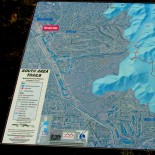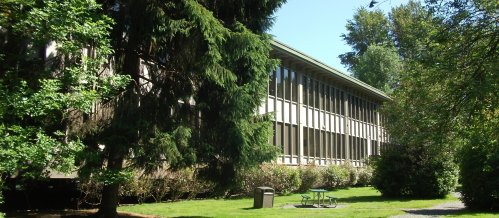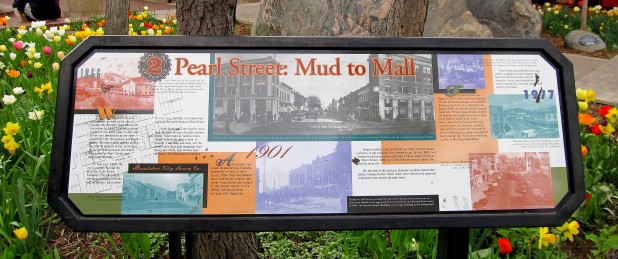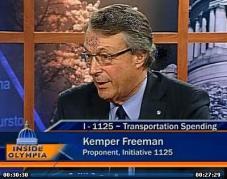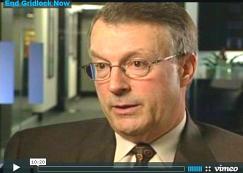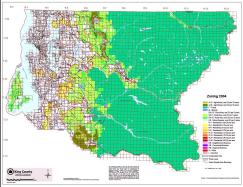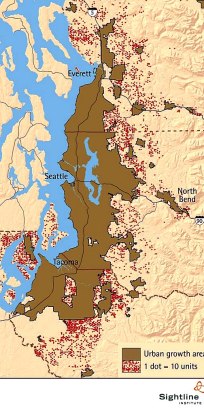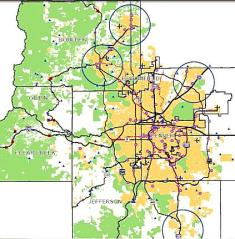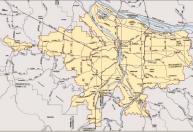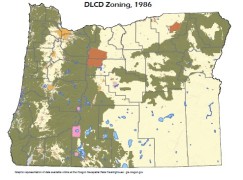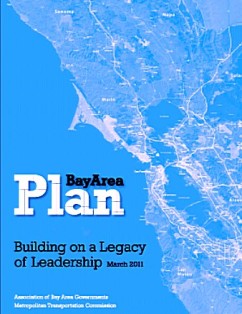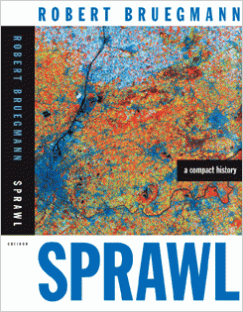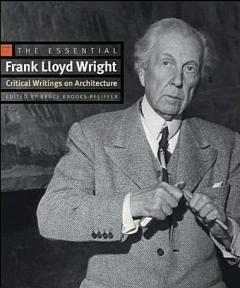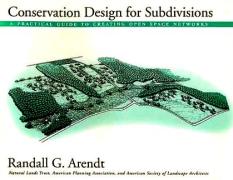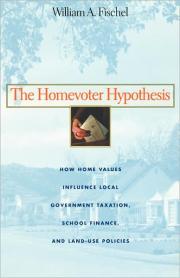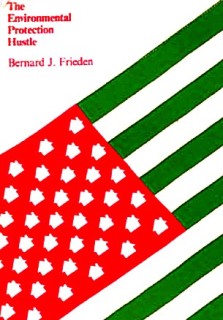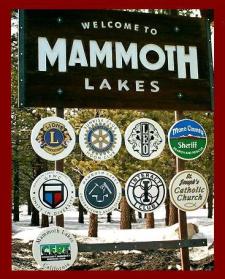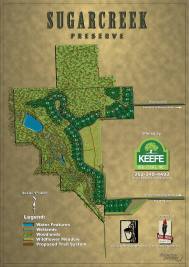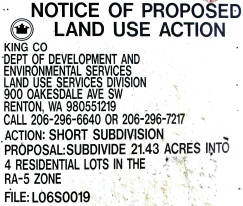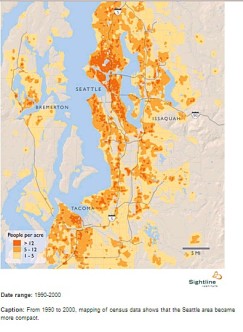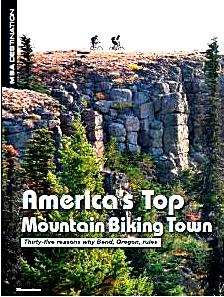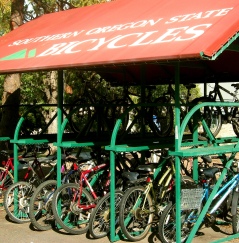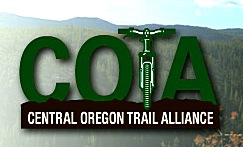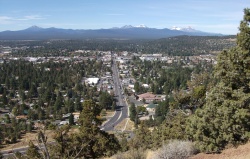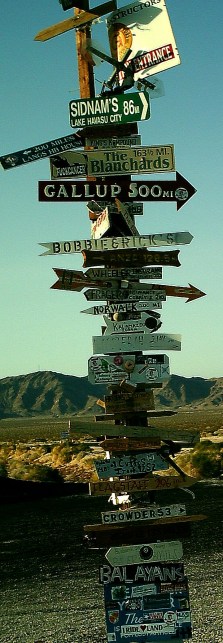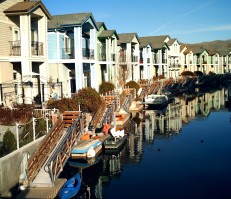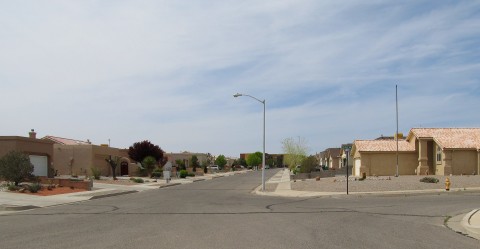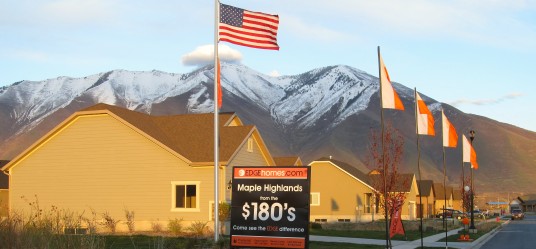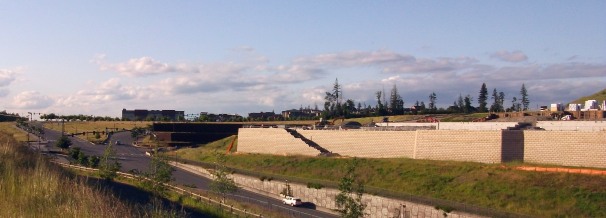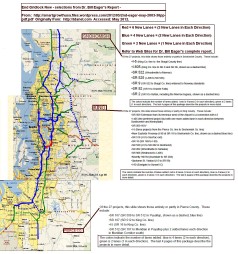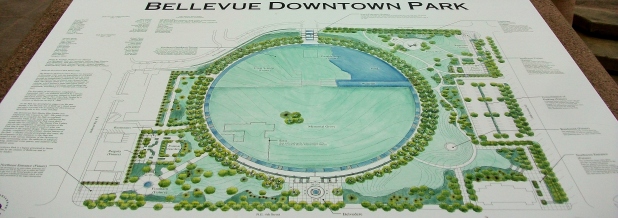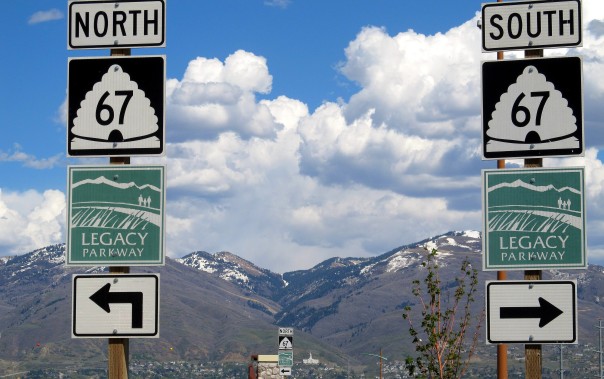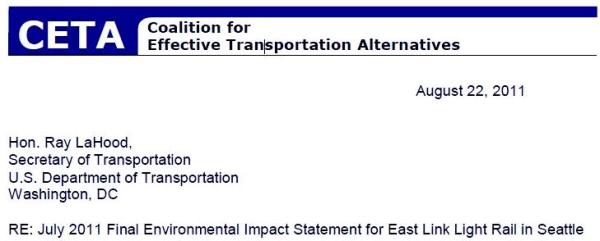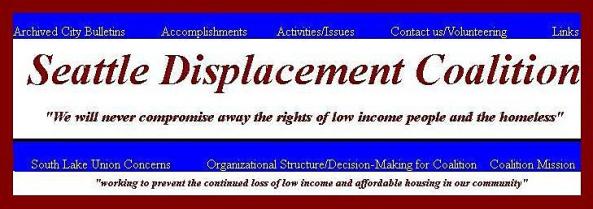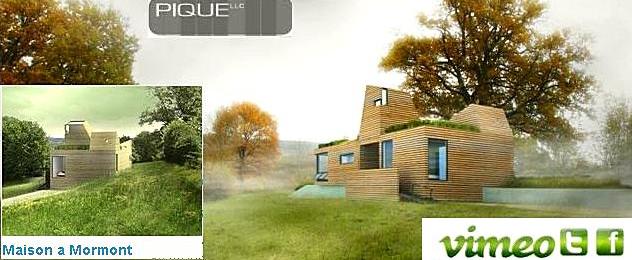"Smart Growth" and "New Urbanism" Compared with "Large Lot Zoning" (Tom Lane) [ Home Page – Click Here]
(May 17, 2017) – Traditional "Large Lot Zoning" is "Greener" than "Smart Growth" within Urban Growth Boundaries . . . Copyright 2009 – 2017 . . . Tom Lane . . . Photographing California, Arizona, Nevada, New Mexico, Colorado, Utah, Oregon, and Seattle, Washington.
Dr. Alan Evans, Dr. Oliver Marc Hartwich
(May 19, 2012) Dr. Alan Evans is Professor of Economics at the University of Reading (United Kingdom) is one of the world’s experts on land use economics. He is a prolific author of several books and articles on land use economics (see full text links below).
Dr. Evans is director of The Centre for Spatial and Real Estate Economics (CSpREE), within the Henley Business School at the University of Reading.
According to the CSpREE web site: http://www.reading.ac.uk/economics/research/centres/econ-cspree.aspx –
“CSpREE specialises in the theoretical, empirical and applied economic analysis of property markets and the spatial economy. Our members have made significant contributions to developments in Urban and Regional Economics, Regional Science, Transport Economics, Real Estate Economics, Housing Economics, the Economics of Town Planning and the Economics of Land and have published in the leading international journals in these fields.
The Centre maintains strong links with government, the professions and industry while also developing extensive international collaborations. The Centre’s unique strength is reflected in the fact that it constitutes the largest group of spatial economists working in any European or American University.”
Members of the Centre –
- Professor Alan Evans – Director
- Dr Graham Crampton
- Mr Eamonn D’Arcy
- Dr Federico Martellosio
- Professor Geoff Meen
Dr. Evans has also written papers with the noted Dr. Oliver Marc Hartwich (home page with free articles: http://www.oliver-marc-hartwich.com/about-me).
Dr. Hartwich is executive director of The New Zealand Initiative, a public policy think tank with offices in Wellington and Auckland, New Zealand. Dr. Hartwich has also served as research Fellow in the Economics Program of the Centre for Independent Studies in Sydney, Australia, along with think tanks in Britain (Policy Exchange and the International Policy Network).
Dr. Alan Evans Academic Textbooks and Research Papers
Here are some of Dr. Evan’s books on Google, along with links to his PDF articles. The books are actually available as “Google Books:”
EVANS, Alan: “Economics, Real Estate and the Supply of Land” (2004)
EVANS, Alan: “Economics and Land Use Planning” (2004)
PDF Articles –
EVANS, Alan (2006): Submission to the Barker Review of Housing Supply
EVANS, Alan; and HARTWICH, Oliver: “Unaffordable Housing: Fables and Myths” (2005)
EVANS, Alan; and HARTWICH, Oliver: “Better Homes, Greener Cities” (2006)
EVANS, Alan; and UNSWORTH, Rachael: “Densities and Consumer Choice” (2008)
Alan Evans and Oliver Marc Hartwich have written much more, and I will add more links as I find them. Since Evan’s textbooks are expensive, check out web sites that sell used books on the Internet.
Consistent with the mission of this web site, Alan Evans appears to oppose smart growth, and advocates affordable housing within green suburbs at lower densities, similar to many of the Professors that I discuss on this web site. Refer to his recent 2006 paper, entitled “Better Homes, Greener Cities,” written with Dr. Oliver Marc Hartwich – 50pp PDF – http://www.localis.org.uk/images/articles/Feb%2006_Better%20Homes,%20Greener%20Cities.PDF
The introduction summarizes Alan Evans’ philosophy. If you are an environmentalist and outdoors enthusiast like I am, then you will love reading these introductory paragraphs:
“The planning system should aim to balance people’s
housing demands against the needs of the environment.
By using only a further one or two per cent of the 90 per
cent of land that is undeveloped, the quality of British
houses and neighbourhoods could be dramatically
improved. Yet our system of town and country planning
too often imposes the views of politicians, officials and
planners on the population at large.We are told we ought
to consume less land, to live in flats not houses, but rarely
does anyone ask: “how do people themselves want to
live?”
House prices and opinion polls clearly show that the
British prefer to live in detached homes with gardens in
green suburbs, but the planning system restricts this kind
of development and instead delivers high-rise living in
ever more crowded cities. So despite just ten per cent of
the land in the UK being urban, new development takes
place on the kinds of green spaces people actually use –
like allotments, playing fields, parks and gardens – in
order to save agricultural land. Nearly half the UK’s
playing fields have disappeared in the last fifteen years.
Front gardens 22 times the size of Hyde Park have been
lost in London alone. Our cities are becoming grey
deserts.
This has serious implications for the health of the 50
million Britons who live in urban and suburban areas.
Fewer trees means less oxygen, which inhibits good
mental performance. Neighbourhoods with less greenery
are associated with lower levels of physical activity,
leading to higher obesity rates. Easy access to green space
also brings mental health benefits. Reversing the trend of
high density development in favour of ‘garden city’ living
is not just what most people want, it is good for us too.
Reforming the planning system – We do not want a development free-for-all, but successful reform of the planning system must ensure that the housing market is flexible enough to respond to local demands and that local residents are compensated for the
negative impact of new development.
The German and Swiss planning systems offer good examples of how to balance the needs of the environment with the demand
for housing, and they both deliver affordable, high
quality, spacious homes in green towns and cities.
There are clear benefits to developing – increased
affordability, spacious homes, gardens, green neighbourhoods
– but everybody recognises that there are costs too,
especially if development takes place on ‘green’ rather
than ‘brown’ land.
There are two ways of taking the social and environmental
costs of building new homes into account, both of
which involve increasing the cost of land in order to limit
development: either by constraining the supply of land,
or by levying some sort of tax on land. Constraining
supply is more popular because it does not affect those
who already own land or property.
This group actually benefits from rising house prices, and the costs are borne by those who do not own their own homes – the young
and the less well off. Taxation is fairer because it affects
both groups – owners and non-owners – equally. It also
offers more benefits to the community, who can share in
the profits of development currently reaped by
landowners.
We therefore propose the following reforms:
To read about the reforms, click the 60pp PDF –
http://www.localis.org.uk/images/articles/Feb%2006_Better%20Homes,%20Greener%20Cities.PDF
Dr. Alan Evans is Strongly Against Smart Growth and “Infilling”
This quote from Dr. Evans certainly summarized what I’ve said repeatedly on this web site, about the importance of parks within our city limits, rather than relegating open space to outside the urban growth boundary:
“[B]etween 1992 and 2005 out of the 77,949 playing fields nearly
34,000 disappeared5 as planning policies focus on developing
within existing towns instead of letting cities grow
outwards. In fact, the Government has set a target for
using at least 60 per cent of so-called brown field land for
new development. This policy is meant to ‘recycle’ areas
that were previously developed, and sounds like a reasonable
idea. However, many of these brown fields look
remarkably green.
These are inner-city areas that nature
has reclaimed. Many are now valuable havens for plants
and animals in the cities, and they also provide recreational
spaces for children and adults. From the statistical
evidence we know that people prefer to live in green
environments.Most would like to enjoy the clean air and
greenery of the countryside, or at second best would like
to live in green cities.Yet, with disappearing playing fields,
the re-use of ‘green’ brown field sites and densification
policies it becomes less and less likely that people will ever
live in such an environment.
It should hardly be surprising that this is bad news for
nature too. The Independent newspaper has reported the
mystery of disappearing butterflies.8 With gardens disappearing,
cities getting denser and highly intensive
agriculture surrounding the cities, butterflies have
nowhere to go. As we pointed out in our first publication
Unaffordable Housing, biological research has shown that
there is no better place for butterflies (and other plants
and animals) than what the opponents of development
would derisively label ‘urban sprawl’. It may be counterintuitive,
but the wish to ‘save nature’ by increasing densities
has produced the very opposite result.
Photos – Large Lot Neighborhoods in Less Regulated Western USA Markets
Finally, a few nice photos of very nice established, or forthcoming, green neighborhoods, with large lot zoning across the USA, followed by examples of where native vegetation is threatened near Denver, Colorado, due to high density developments under the DRCOG (Denver Regional Council of Governments). This organization and its urban growth boundary are responsible for high levels of air pollution in the Denver area, along with a high rate of foreclosures. Their policies have destroyed the Denver housing market, in a manner very similar to the growth management acts in Oregon and Washington State.
The large lot photos are from Bellevue, Washington; Palm Springs, California; Salt Lake City, Utah; Phoenix, Arizona; Placitas, New Mexico; Rio Rancho, New Mexico; Albuqerque, New Mexico; Orinda, California; Thousand Oaks, California; Mill Valley, California (San Francisco area); Castle Rock, Colorado; and Superior, Colorado (Denver area).

Bellevue, Washington “Pikes Peak HOA,” with large lots, many on acreage. This street view is framed by Lombardy Poplars and features gorgeous rhododendrons.

Southeast area of Palm Springs, from the Frank Bogert trailhead, looking Northwest. Palm Springs features mid-century modern architecture, with quarter acre minimum lots, and a maximum building height of two stories. There is NO urban growth boundary, unlike many California communities. UGB’s are NOT required in California, unlike Oregon and Washington, where they are required under statewide growth management acts.

Springville, Utah is a suburb in the southeast part of the Salt Lake City metro area. This area, along with most of the Salt Lake City metro communities, features large homes on large lots, with wide streets, satisfying consumer preferences. The Salt Lake City area also features natural and planted vegetation, including native oak and maple trees. Unlike Denver, many coastal California cities, and all cities in Washington and Oregon, there is NO regional urban growth boundary surrounding the metro area. Consequentially, housing is affordable and land is cheap (see next two photos).

Lots for only $65,000 in Mapleton, a suburb southeast of Salt Lake City, where there is NO urban growth boundary.

Here’s an expensive large lot community – Paradise Valley in Phoenix, Arizona – with a view of the Phoenix skyline towards the southwest. Many properties are on acreage, with natural vegetation preserved. Less expensive Phoenix area subdivisions with natural vegetation include Cave Creek, Carefree, and parts of North Scottsdale, among others.

Placitas, New Mexico is about 20 miles northeast of downtown Albuquerque. This unincorporated community features large homes on large lots of 1 to 5 acres. High desert vegetation is preserved, including native Junipers, oaks, cacti, and native grasses. Many people commute to Albuquerque, Rio Rancho, and even Santa Fe because they prefer traditional architecture on large lots in a peaceful, natural setting, with the benefits of living in an unincorporated area (of Sandoval County).

The “Highlands at High Desert” in Northeast Albuquerque features large lots, some are an acre or more. Native preservation has been preserved on many, but not all, of the lots. Gravelscaping has been used in some instances. Hiking and mountain biking trails extend into the Sandia Mountains. It is one of the nicest and safest neighborhoods in metro Albuquerque, except for New Mexico’s famous gusty winds and associated dust storms. If you have migraines or epilepsy, be advised.

Rio Rancho, New Mexico (“The City of Vision” just northwest of Albuquerque) was originally planned as a large lot community with half acre lots many decades ago. Construction of single family homes, businesses, and will continue for many years. However, subdivisions can build on smaller lots. This photo shows properties on approx. quarter acre lots. Note the wide setbacks and nice wide streets. Unfortunately, gravelscaping has been utilized, and native vegetation has been entirely removed. Nevertheless, this is a very nice neighborhood, and the northern areas of Rio Rancho are among the safest in the Albuquerque metro area.
Rio Rancho city officials are exceptionally pro-business, and are especially interested in bringing high tech employers and educational institutions to their city, including Intel, Hewlett Packard, Sprint, the Univ. of New Mexico west campus, and Central New Mexico Community College. Rio Rancho gave Intel incentives for its semiconductor manufacturing plant.

Looking east towards the Sandia Mountains from the off road vehicle area at the western edge of Rio Rancho. Note the four dirt roads extending to the west. These are part of the original grid of half acre lots, that exists in preliminary form as dirt roads in many areas. The dirt roads are open to the public, and some people have bought property for their trailers and mobile homes (click to enlarge to see a few of these). Land is cheap since the area has not “filled up,” and can accommodate tens of thousands of homes. And, there is NO urban growth boundary around either Rio Rancho or Albuquerque. Furthermore, lands outside of Albuquerque and Rio Rancho are privately owned, and could ultimately be sold for development, but only if the region DECIDES to grow to 5 million people. Given that Phoenix and Vegas are viewed as planning disasters by most folks in Albuquerque, it is likely that residents will become anti-growth. Right now, the metro is just under a million, growing 20% from 2000 to 2010. More information and photos on the always affordable Albuquerque and Rio Rancho forthcoming, and at this post: https://smartgrowthusa.wordpress.com/2011/02/12/albuquerque-santa-fe-new-mexico-impact-fees-smart-growth/

Inexpensive new homes in Rio Rancho, due to plenty of developable land, and the lack of an urban growth boundary.

Dr. Evans emphasizes the importance of conserving urban habitats for plant and animal species. Fortunately, there are some areas that understand this, such as Orinda, California, with this oak savannah restoration project. The sign says that 300 species depend on oak savannahs.

Newbury Park (Thousand Oaks, California) has large lots and very nice wide streets, wide bike lanes and sidewalks, and lots of open space. Consequentially, the City has placed warning signs for deer on streets. How many “smart growth” communities with 10 to 30 units per acre have deer within their boundaries?

Dr. Evans also discusses the importance of parks for recreation and human health. Mill Valley, California along with Marin County have hundreds of miles of bike trails, among the highest of any urban area in the country. Despite urban growth boundaries in coastal California cities, at least many coastal cities have incorporated parks and open space within their city limits, including Mill Valley, San Rafael, Fairfax, and adjacent cities.

Mill Valley, California has an urban growth boundary, however, they also have hiking and bicycle trails and large lots in many areas, as shown here on the hillsides. Of course, the skyline of San Francisco is in the distance.

JUST SAY NO TO SMART GROWTH – High density smart growth at the southern edge of the Urban Growth Boundary in Metro Denver, in Castle Rock, Colorado. Note the color of the sky on this April day due to the air pollution drifting from the Denver metro. I remember the sun on that day – it was behind a brown cloud, just like in Phoenix, Los Angeles, or Seattle. See my post on Smart Growth Boulder for more discussion, including the views on Smart Growth in Denver-Boulder from Dr. Wendell Cox and Dr. Al Bartlett of the University of Colorado – https://smartgrowthusa.wordpress.com/2010/07/05/boulder-exposed-brown-cloud-choked-highways-and-parking-meters/

Will this new development in Castle Rock save the existing native plants – the Ponderosa Pines, oaks, and grasses? Or, will they clearcut all of it in exchange for gravelscaping?

Superior, Colorado NW of Denver, and next to Boulder, is within the regional DRCOG administered Urban Growth boundary. “Horizons at Rock Creek” features 1200 apartments and this artificial lake. Rents for a STUDIO start at $900. This is UNAFFORDABLE, and for a SINGLE person, requires working two minimum wage jobs. When visiting, the manager told me that foreclosures have forced folks out of their homes and into apartments, with apartment vacancy rates at low levels. He said that they RAISED their rents due to the higher demand for rental housing. Therefore, the foreclosures and high apartment rents are a direct result of land rationing from the Denver Regional Council of Governments. Indeed, Fort Collins, Colorado features lower rents, since they are outside of the DRCOG regional urban growth boundary. Map of the boundary at this link – http://www.drcog.org/documents/MetroVision2035FinalPlanFigure5Summary.pdf
